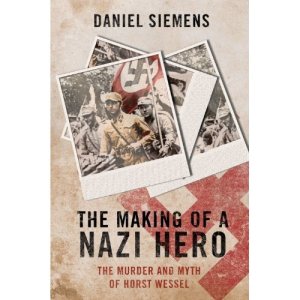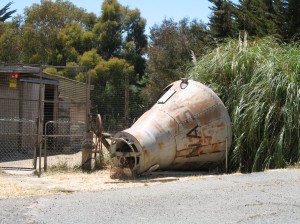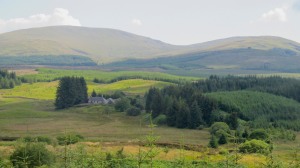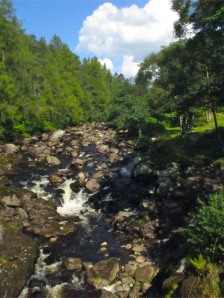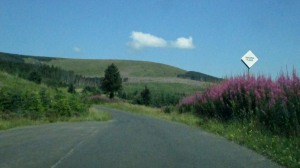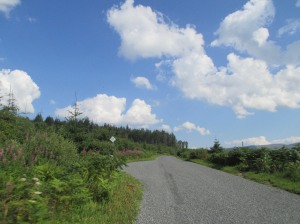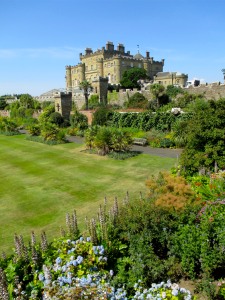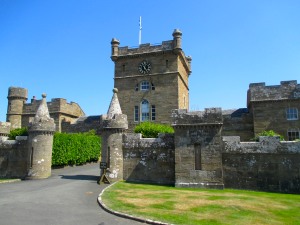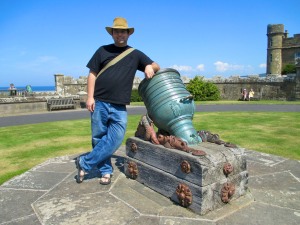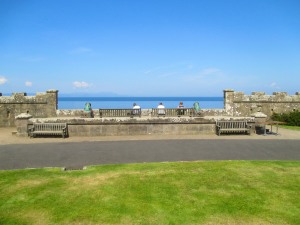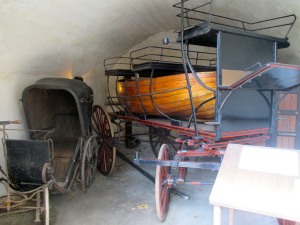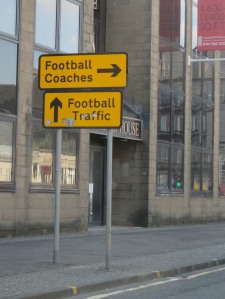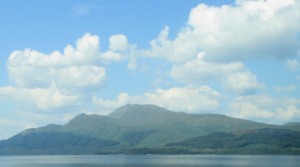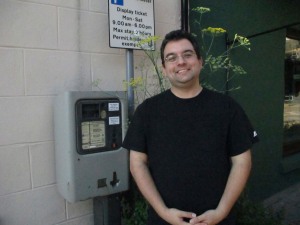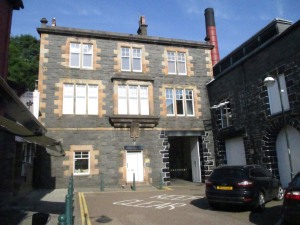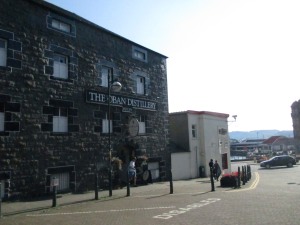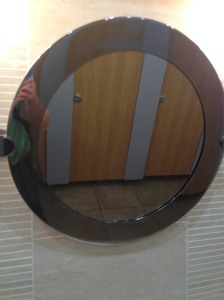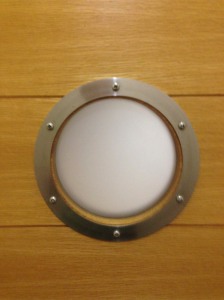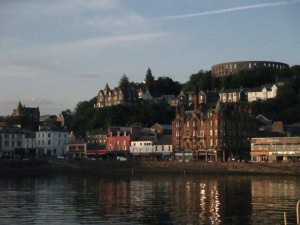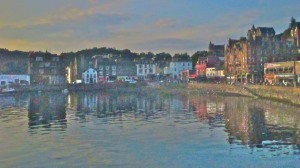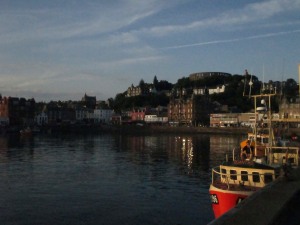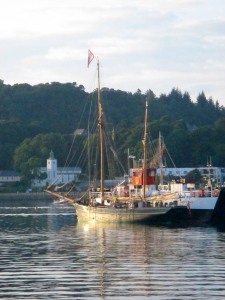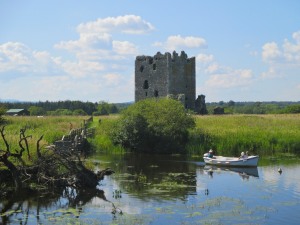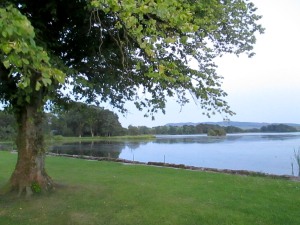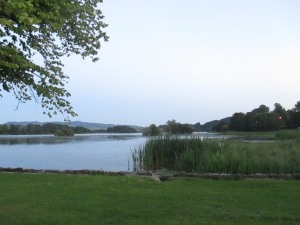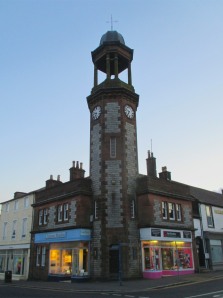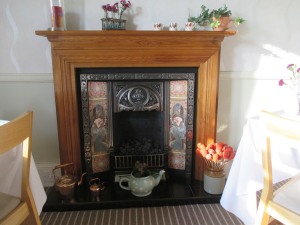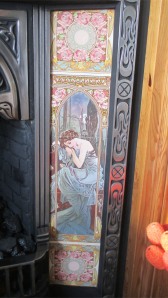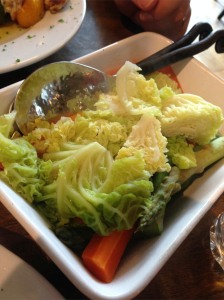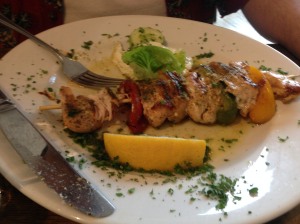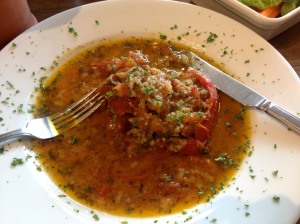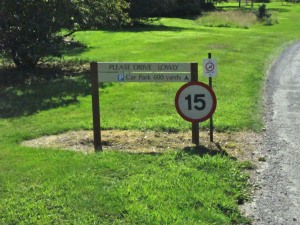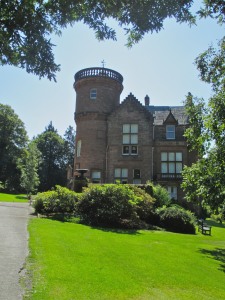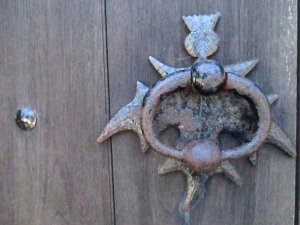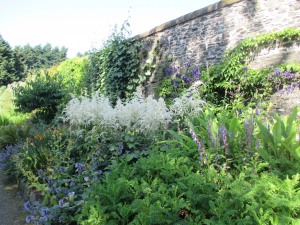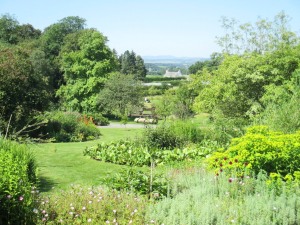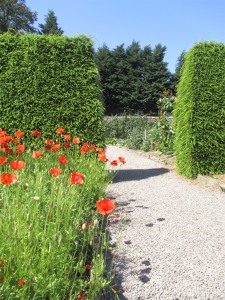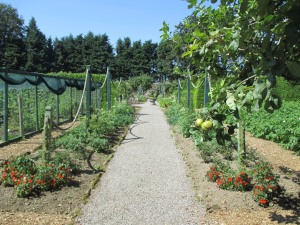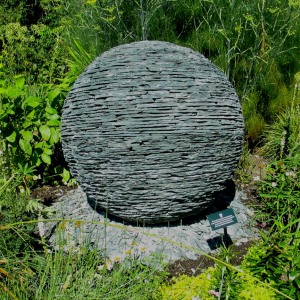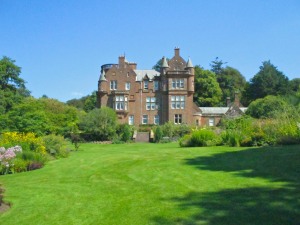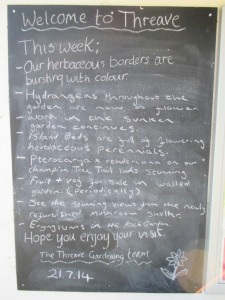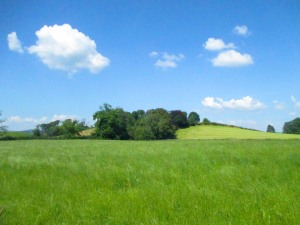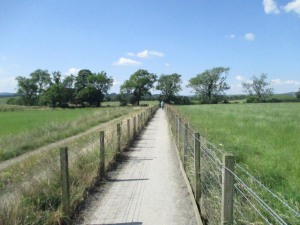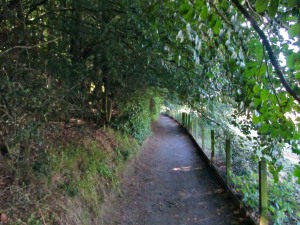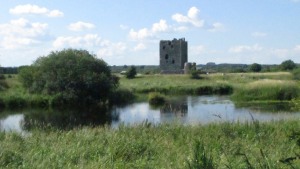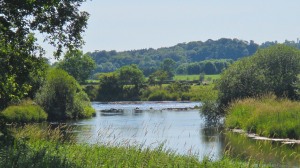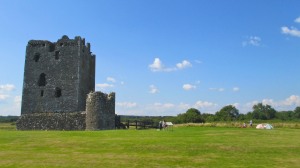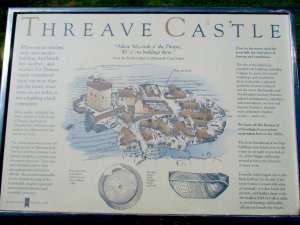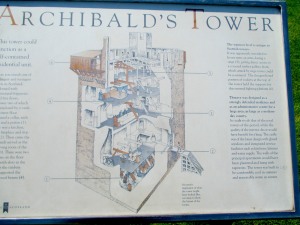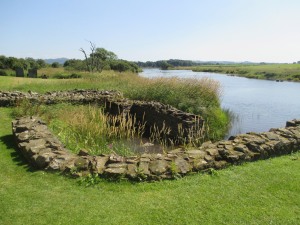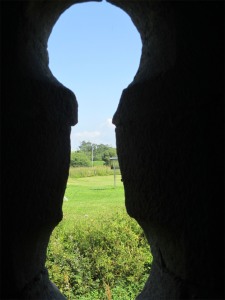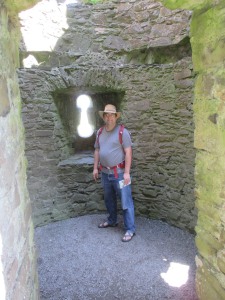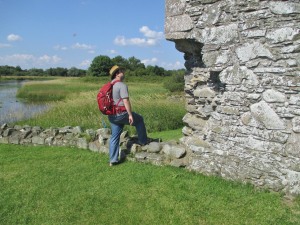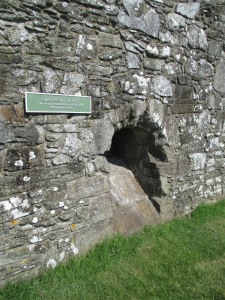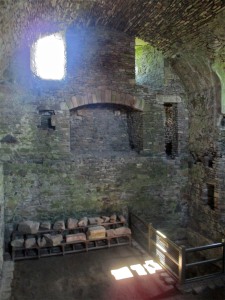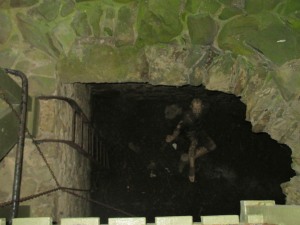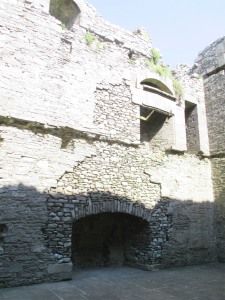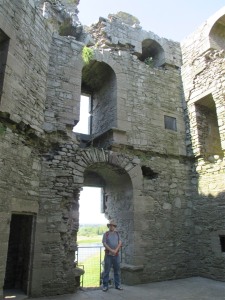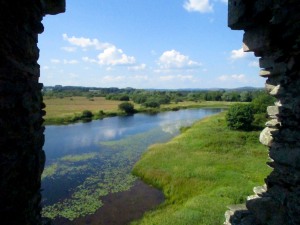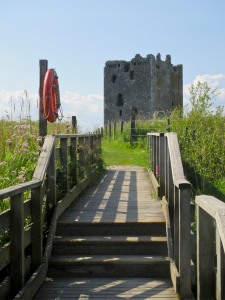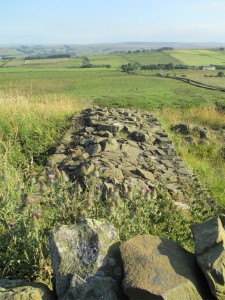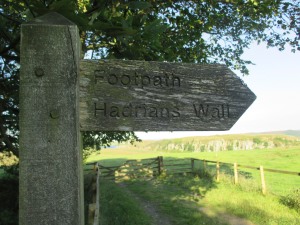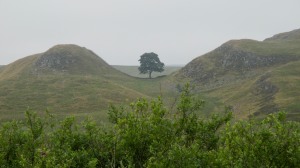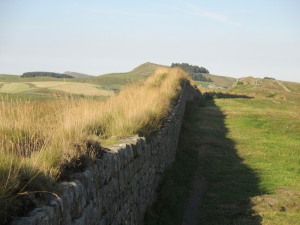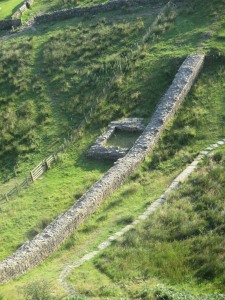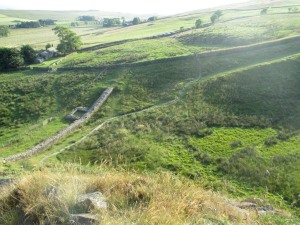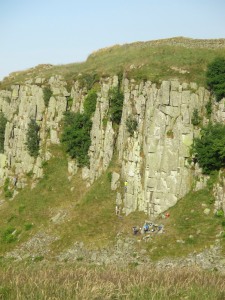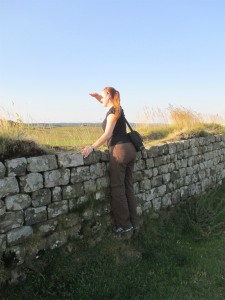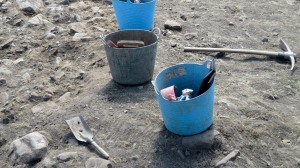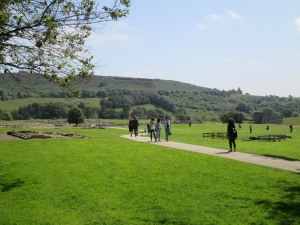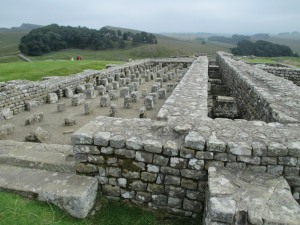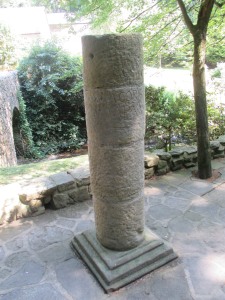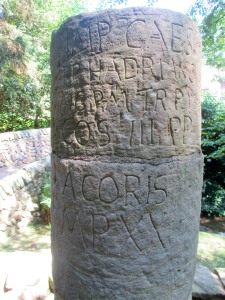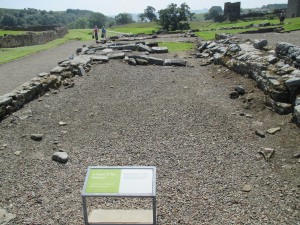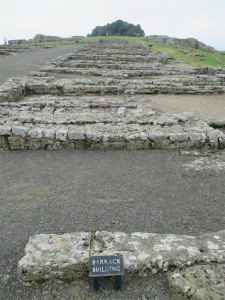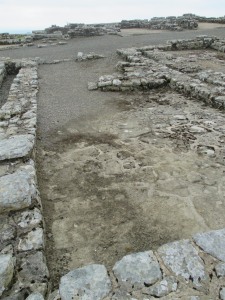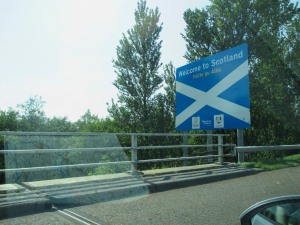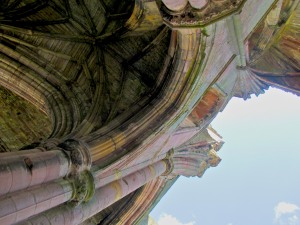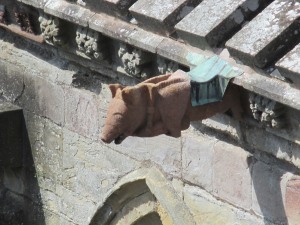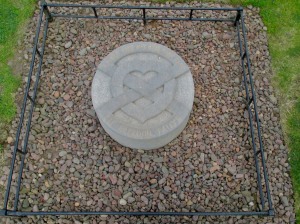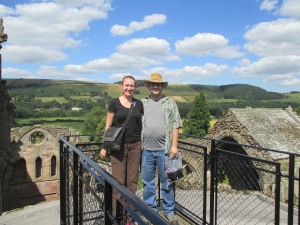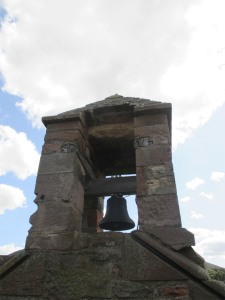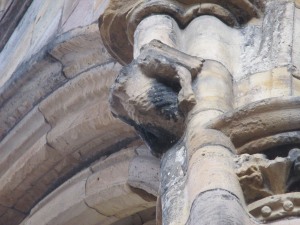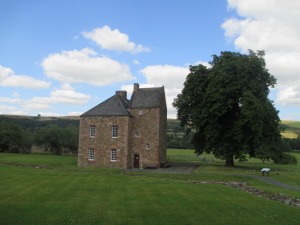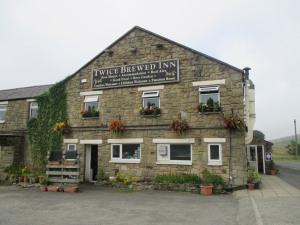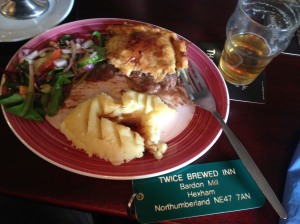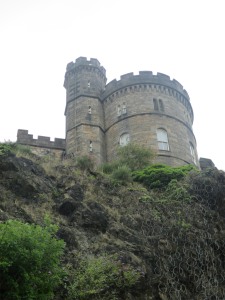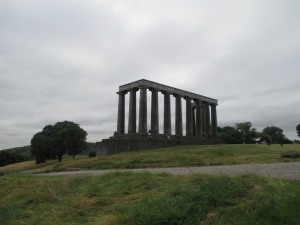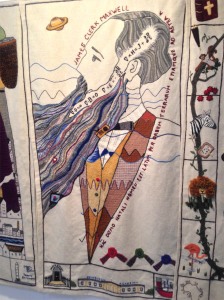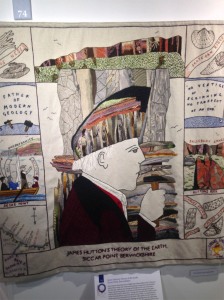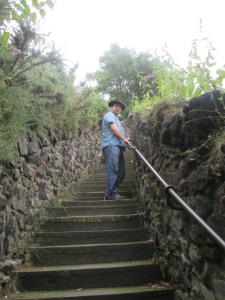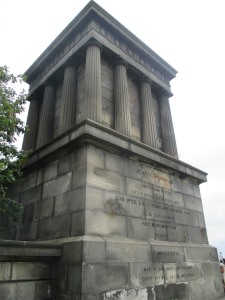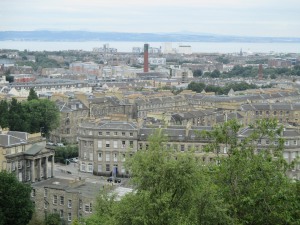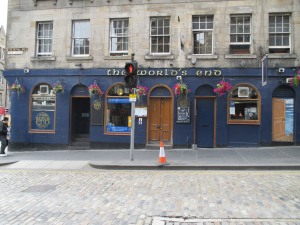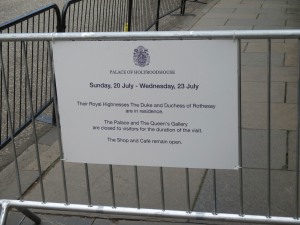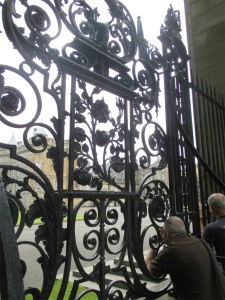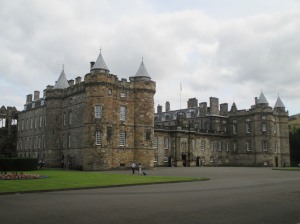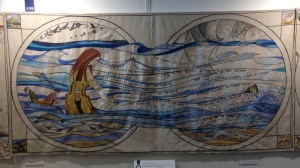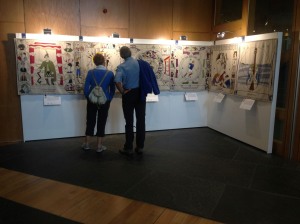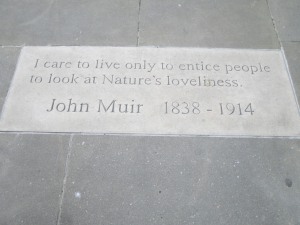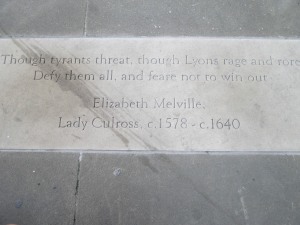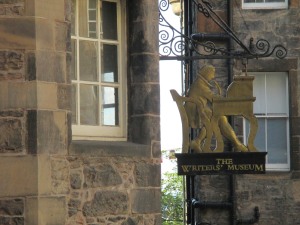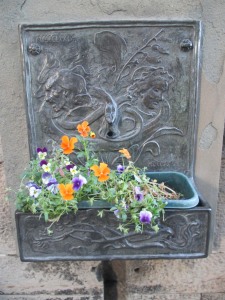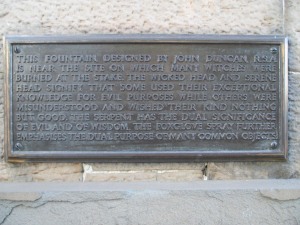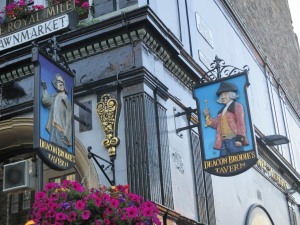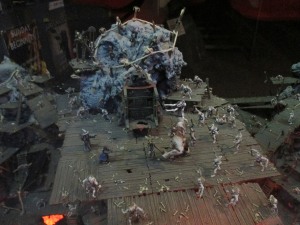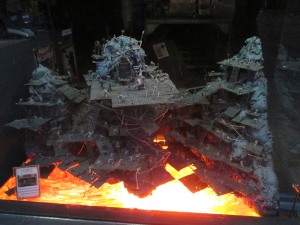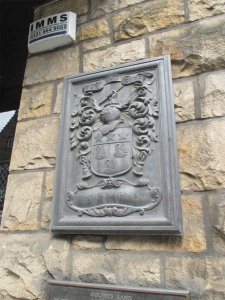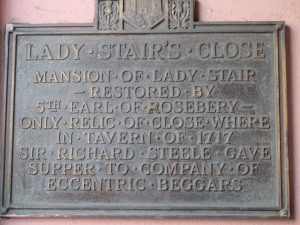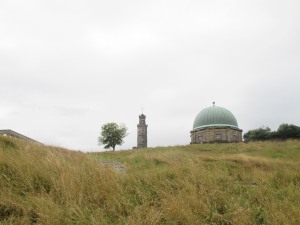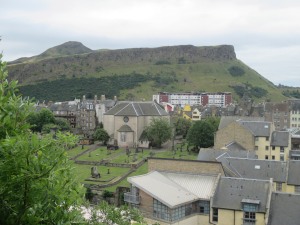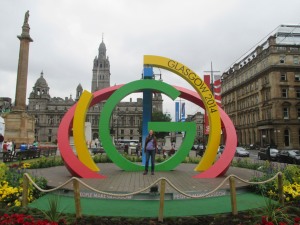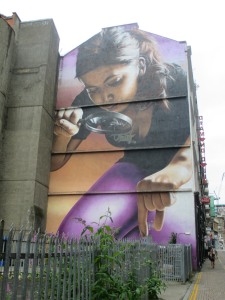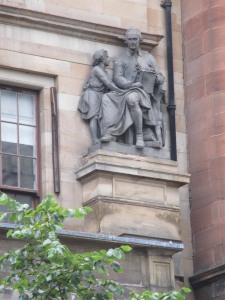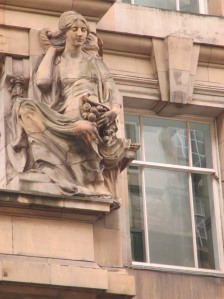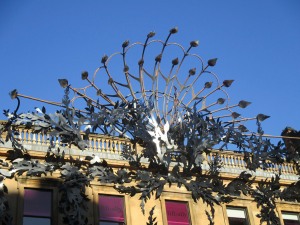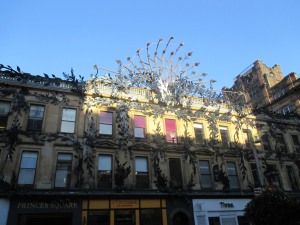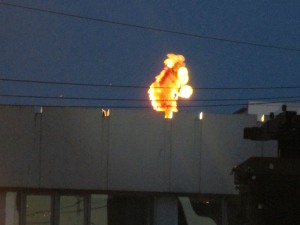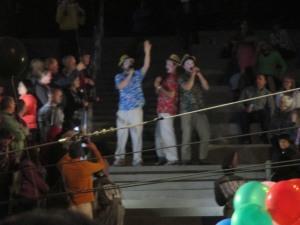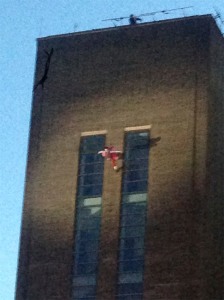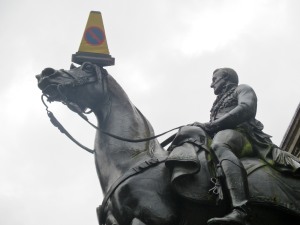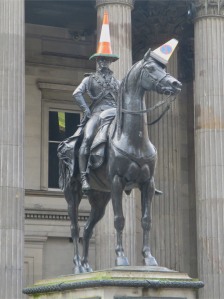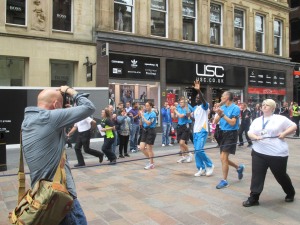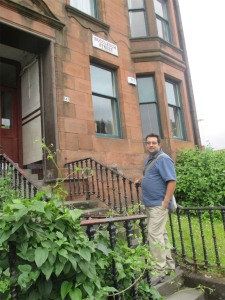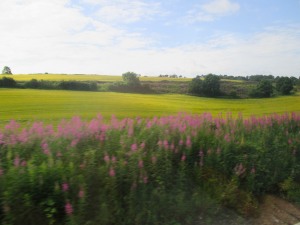I recently finished two books with subject matter pertaining to the Revolution, Washington’s Spies, by Alexander Rose, and Founding Mothers: The Women Who Raised Our Nation by Cokie Roberts. I’ve been reading Rose’s book bit by bit since I picked it up in the International Spy Museum one D.C. trip, and it has since gone on to become a series, which I have not seen, on AMC. Roberts’ book was recommended and leant to me by a friend and I just blew through it; published in 2004, Roberts had enough material for a further book, Ladies of Liberty: the Women Who Shaped our Nation, out in 2009. I relate these bits of information because they do actually highlight the contrasts in the books for me.
In a way, these two books offer up an interesting comparison as both rely on limited source material and are about a class of individuals who were at the time largely overlooked by the grand sweep of history, one for their sex and gender, and the other for seeming less honest and less patriotic for doing their duties of vital importance. Neither group would have their stories told by historians of their era even if they might sing other’s praises to high heavens or be lauded in private. Letters are burnt, journals are lost, and some folks who are certainly important remain missing puzzle pieces. History is pieced together though troves of extant documents and valuable rich resources that are saved, revealed, found, deciphered in script, and occasionally for Rose, declassified. Both Rose and Roberts sought to shine light on subjects who were in the shadows of the main players like the Founding Fathers, or other fighters and statesmen and Sons of Liberty and their Loyalist and British counterparts. Both have limited materials, however both found rich resources. In that there is a great likeness in subject and material available, and so I feel a comparison is fair to be made though the subject matter is different. My book review for both is so swept into a single post!
Washington’s Spies required thoughtful patience for me to read. One could, I think, read it quite fast and be done with it. It is narratively exciting at times, although if you do not find code interesting, that particular chapter may seem dull to you. It required two handed reading, or multi-fingered page holding, one good hold for the current page in the paperback, and a side finger or the second hand for the appropriate place in the footnotes. Rose has glorious footnotes, the kind that properly (when appropriate) expand on the material and complement the writing in the text, so his text flows and is not bogged down, but he can have these wicked little asides, or print great excerpts, illuminate the reader to side topics or the writings of others, or include humorous letters from our historical protagonists in merry footnotes. These are footnotes to be read with the text, not after it, nor abandoned as boring extra texts full of source and ibid. So really, it’s not so much that the book requires it as that I was relishing his footnotes and immersing myself in the whole book.
Where I was in the school year, and reading small portions here and there, and taking it traveling with me (it went back to D.C. the next year, it went to the U.K.that summer) meant I could fully plunge myself in for discrete moments after hours, but after hours only; it made an excellent travel book for that. But, it did mean that reading was slow for the lack of time to immerse in it.
Reading in this manner takes investment, and sometimes and extra finger for cross referencing. It takes complete attention and it is wonderful when it is done well, as Rose has done; the cast come to life as vibrant full people- not that they do not in his text, but there is greater nuance and appreciation, a sort of depth, in the footnotes. Perhaps by reading them alongside, like reading those copies of Shakespeare from middle and high school with the translated phrases and references on one side (but not a text translation) helped us slow down and be better readers of the Bard. We’re encouraging our students to comment and annotate not just to think, but to slow their reading, to take more detail in. I’d like to think that in reviewing what I’d read last month and then reading hand in hand with the footnotes has helped me slow a little and process what I’m reading and be thoughtful of both the author and his content. I am appreciative of Rose’s work in even this small regard.
Footnotes is a point of contention and comparison for Founding Mothers. My friend, the lender, was impressed and touted the number and inclusion of a variety of sources in Roberts’ footnotes. I believe I replied that the reality is you rather had to do that when writing history, however that didn’t change looking forward to reading them. If you aren’t a big fiction reader, or a historian, this may be shocking news. In her acknowledgements and author’s note, Roberts explains that she hadn’t worked with footnotes “since my long-ago college days” and she had another take on “that onerous task” though she takes full responsibility for any errors and did the correcting. I am inferring, then, that Roberts did not have to use footnotes or endnotes for the essays that she wrote, or as a journalist has not written any academic articles or papers that would employ them, or even write something for internal use that might lead her to want to cite something at the end of her work. Her work as a correspondent and analyst has taken her away from the writing side of journalism to loose a mundane but basic skill.
This resource skill is so lost that in the text itself, there are no numbers for the notes. An editor could have requested super text, and the woman who did the footnotes could have put them in, too. The footnotes are organized by chapter, with major sources in paragraph form, followed by traditional numbered and sourced footnotes, with the last words of the quotes in bold. You would have to hunt for the bold text in the chapter as there are no super text numbers for the footnotes in the text. This is somewhat sad, as it does make things harder to find, and I would be saddened further if there were any footnotes for textual items other than direct quotes, for those would be what would really intrigue me- where is that fact or reference from? What is the context of this passage? Apparently answers to questions such as those lay somewhere within one of the books listed at the beginning of the chapter’s section in the footnotes, or from Cokie Robert’s own head. As for elucidation, she provides none, purely sources, and then primarily for quotes. Cokie Roberts does provide a who’s who of the important men, “sorry though [she] is” (p. 279) to define the women by them, to help a reader keep track of the “cast of characters,” and some historical recipes shared by the women. Unless one really struggles with identities, this book is not a two hander, nor a need for an extra finger there to keep a ready reference. So, sadly, my first impression of her book was it’s lack of notes, how it connects to other material!
To be fair, no one really said that one must present a certain amount of content in notes, and notes are presented primarily as a place for sources. Different style guides will offer carrying opinions on what to do there and how strict one should be in including other material – as well as perhaps one’s past experiences and marks from college professors. However, we teach our students to cite sources for facts learned as well as quotes. Notes, as a sort of backwards facing window into the mechanics of writing and research, provide a view into the scholarship and integrity of the endeavor. You get a sense of the caliber involved with Rose’s work because he has these really great notes and you loose that rear window opportunity with Roberts’ endeavor because of her struggles with notations.
Now let’s press on to content:
Cokie Roberts is on a personal mission with her research, to answer a question she always had about the mission female voices in the great family history that unfurled in retellings over the years- one to be proud of in lineage, but one that does highlight, as with much of written history, a lack of female voices. Her book is much the same. Roberts, a personality more than a journalist, analyst, or correspondent, feels free to inject her book with her own musings, exclamations, and comparisons to modern dray life. Rather than enlightening the reader, these seem to dumb down the book, over explaining, pointing out the reference, making points repeatedly when the voices of the women she is trying to shine a light on could be far more outstanding on their own.
This is a very different technique from Alexander Rose. Rose provides layers upon layers of context for motivations while Roberts seems content with not delving into anything beyond a straightforward reading. She seems not to have taken into account much of the modern research done on the men in her tale for context on them, or accepting it and moving on to focus on the ladies, and passages involving them, especially her side comments, are cringeworthy. It is like she hadn’t had her Founding Father myths shattered until she did research for this book and it has left her embittered, catty, and projecting her feelings onto the Mothers. She still holds to many common beliefs, finding singular pieces of evidence to support them, like Betsy Ross as the [implied sole] creator of the American Flag, without analysis- let alone mention- of what historians actually think that is contrary, or reverts to calling Mary Hays Molly Pitcher (“the Battle of Monmouth, New Jersey, where Molly Pitcher fought,” p.104) after debunking Molly Pitcher as a collective image, a “generic term.” (p.79)
Rose provides layers of nuance backed by a plethora of primary and secondary sources. For an example, I direct you to the layered contradictions of Robert Townsend, who can be described as Quaker and Episcopal, secular and devout, idealist and mercenary, pacifist and militant, Loyalist and American, all within the span of a summary paragraph, and that these bits of background are not only wholly explained, but furthermore showcase his decision to join up as a spy and give great context for the situation around him at the time and what he might muster to the ring he was joining. This is very well woven together in Chapter Five: A Man of Parts and Halves (referring to Townsend’s nature). Rose spends careful time and type space devoting attention to the background of his players.
Religion, family, location, upbringing, movements, history, the things seen and witnessed… all nuances inform the reader and give a picture. Some of it is reminiscent of genealogical research. If you know what happened in the neighborhood, or who lived down the street, you have a web of possible connections to ferret out. You know what was happening around a person, you know their environment, and you know them better. Such is the potential of subagent Hercules Mulligan and how he fit into the ring and was vouched for: he wrote no letters of his own, but physically, his shop was around the corner from Townsend, and Townsend possessed a receipt from Mulligan. (p.278) Scant evidence for normal people for a relationship, but for spies, that’s gold.
Roberts, according to an interview, said that she did not write a book so much as present the words or letters of the women writing. I do not know if she was trying to be modest, but this is both true and false. On one hand, she does not provide that depth that Rose does for her ladies, and it feels as though she is presenting only the material found within the letters. However, I notice she relies on biographers and secondary sources often, quoting them in text, so this is not truly the case. It therefore cannot be said that she presents the letters solely, with minimum context. Her interjections, her personal remarks, are all over the place. Her running commentary is throughout. She did much more than present the letters with context. The book is infused with her personality.
Roberts likes analogies to the modern day. She likens Abigail Adams’ “feisty” nature to Barbara Bush (p. 61) though one would need the right lens to know why Bush is feisty- this may be lost on the younger set, and I fight back the image of her solely as the kindly looking lady doing all the literacy stuff from when I was a child and she was first lady. Roberts took the space to spell out that Ben Franklin’s 1728 wedding gift to his sister Jane Mecom, a spinning wheel instead of an expensive tea table, was “the equivalent of getting a toaster for an anniversary present.” (p.28) This is fairly self evident to the reader, however, wouldn’t it be more interesting to highlight how oddly precognizant this gift is when American ladies will be, in the later span of these siblings’ years, giving up English tea and spinning American homespun, topics which Roberts uses to paint the scene for her Founding Mothers in the beginning of the very next chapter?
Some of her insights and opinions- her comments for analysis- are cringeworthy. An example of a typical cringe comment (at least to me) comes on p. 91, when discussing how Lucy Knox, like Martha Washington, would stay close to her husband General Henry Knox during the war. General Knox tried to persuade her otherwise and an argument of letters ensued. Says Roberts, “She could be biting, and she could get into all kinds of trouble- a family she stayed with in Connecticut reported to the general that the crockery was broken, the furniture damaged, and the rum, twenty-five gallons of it, missing-but Henry Knox loved his fat and funny Lucy.”
There is no follow up to this comment; Roberts changes topics immediately after. It reads like a statement from an annotation, a catty remark, a gut comment. There is no discussion or illumination on what sort of activities the general’s wife might be up to that could break furniture or crockery, nor indeed what she is doing with the rum, a most valuable wartime ration, though we could surmise that she could have been involved wartime causes gone wrong given her patriotism, or drowning her sorrows and in deep personal turmoil given her longing for her husband; something is going on with Lucy and it isn’t pleasant or fun. (See the letters at Womenhistoryblog for her mental state during their separation and her drinking the rum in a depressive mood as a possibility. The full accusation letter is available here.) Either way, the General remains mum on the subject. This is telling.
Instead we are told by Cokie Roberts that Lucy is “fat and funny.” We have never been told this before. Lucy had previously been described as “headstrong” (p. 87) however now we are ascribing her headstrong nature, “biting” or not, that leads to the breaking of furniture where one is lodging to being “funny,” and missing rum possibly to being “fat.” Or both. Or that her headstrong ways are forgivable because she was a plump and pleasant looking doll, even when a report of her stealing rum means something is going on? What does one make of this comment? What does one make of it when other mentions in the book of Lucy Knox continue to focus on her size? What does one make of it coming from a journalist, an analyst? What does one make of it coming from another woman? Lucy is reduced to a humorous person of size, devoid of any intent or emotion, and her husband’s response is stripped of nuance and concern. Roberts demonstrates fully that she cannot infer past the text to what the authors are trying to get at or intimate in the language of their time and she is potentially humiliating towards women of size. Potentially she is negligent towards those with mental health issues as well if she understood the gravity of the situation, if not, she’s being quite dim.
Alexander Rose stays even keeled, however that does not mean his book is dry or without personality. He finds humor and wit and pathos and infuses it into the text (and is part why the notes are enjoyable). Rose can get quite on a roll with a topic and suck you in. He has a great ease with his pen and a storyteller’s knack. Rose is helped perhaps because he picked a nicely focused topic: the inception of American spying and the Culper spy ring with depth and a goal of total comprehension, whereas Roberts wants to bite off all the Founding Mothers. That she had enough material for another book on the same topic, a “companion” (with better Amazon reviews, FYI) makes me think, perhaps wrongly, perhaps right, of someone so inundated or overwhelmed that they didn’t know what to choose or couldn’t form a thesis about it as it was too broad. There are other books about these women; Abigail Adam’s letters are published, Roberts quotes Ellet’s great work on Women of the American Revolution, now Revolutionary Women is out (2006) that speaks for the women Roberts won’t. What makes Roberts’ take unique? She has a name. Her name, plus the topic, a little, could make the book a bestseller.
Roberts is a personality. Her personality, as much as it weaves through the book, is what folks are going to buy, whether they want it there or not. You will have the declarations of “I should think so” (p.105) and the amazements of “can you imagine…” (p. 2) and personal judgements “how dumb can you get? (p.150) Some editor decided that this was okay, that this was consumable, personable rather than hokey, an asset rather than undermining to the material. Roberts set us up that this is indeed a personal quest of hers; this book is a personal journey and exploration. Roberts is looking for herself and injecting herself. In a way, this book is a very large Mary Sue.
Don’t get me wrong, as historians, we research what interests us, and sometimes, that is very personal. There’s a connection there, and we see ourselves in it, and we get defensive and a little into ourselves. We like to pretend and try things on and do living history and take things too far. Sometimes too much. We may not be as bad as Sir Arthur Evans and his wife, wearing the jewels of Helen of Troy, but we dream. We understand that folly. We want to be spies and heroes and heroines, too. We can glory and revel in it. But we don’t have to loose our integrity over it. That doesn’t mean we should demean our subjects or reduce our standards.
Roberts structures her book by time, chapters are periods in short year periods except the first and last, Before 1775 and After 1789. Before 1775 draws heavily on the life of Eliza Lucas Pinckney, though she will have some role herself later as will her daughter and sons (come chapter four). While she is nominally for the “stirrings of discontent,” (p.1) not much focus is drawn to such stirrings, focus is instead broad and soft on daily life, using other Founding Mothers such as Catherine Greene, Abigail Adams, Mercy Ottis Warren, Deborah Franklin and Esther Edwards Burr to flesh out life’s circumstances. Sally Franklin and a few other women mentioned would have been very interesting to follow but are barely given type space; Esther Edwards Burr, while a great parable for daily life, is ostensibly included for the sweep of the Burr family tragedy to tell us something of the character of Aaron Burr as a “villain,” (p. 15) however what we learn is that he is not exceptional in a time and place where fear of death and disease and accident is common. His family tragedy is like many others’.
Roberts turns her focus to grade school milestones that the lives of her mothers and ladies weave through and past. She sets the stage for her cast of characters with unnamed women, women of lower status or social position or wealth (or all three), and women of color, like a page on the poetry of former slave Phillis Wheatley. She connects her Founding Mothers to other elite writers like reccuring character Catherine Macaulay but not to the influence of poets like Wheatley who were prominent, published, and and correspondence and invitations to meet with their husbands. Surely they knew of her! There is what the people are doing, spinning, drinking Liberty Tea, writing, spying, fighting, and then there is what the Founding Mothers are doing. They are, as written, somehow removed from the pattern of the people. They are above it all. They are propagandists, philosophers, and general’s wives. They are not camp followers, they are ladies. This is very elite.
While the maintenance of social structure is a product of the time, one can and ought to be critical of it, see the integration of the lady in the pattern and her presence in the domestic sphere and analyze the intersecting and blurring lines brought about by war and politics. Great work has been done with this with women’s diaries from the Civil War and that is some damn murky territory and a nest of hornets to boot. Cokie Roberts, it seems, would like her ladies to stay elite, to stay above it all, and be on the pedestal with, or equal to and next to, the Founding Fathers. Though we cast critical eye towards the men, these ladies are sadly predictively modern in sentiment, without context of their times (sad because it is without context), and their faults are handwave-able as feisty, funny, and fat!
Roberts does best and shines when writing topically, such as the bounding outcomes of Esther Reed’s “Sentiments” and the fund raising efforts that women created in different cities, counties, and states, to support the Continental Army. She delves into the responses from officers, the participation of different women and men, such as the Marquis de Lafayette making a donation in his wife’s name, and the contrasting opinion that one paid them to go away, (p. 126) still a sign of their doggedness and zeal.
Roberts’ writing suffers when she is unnecessarily vague. Take Kitty Greene’s nursing duties to the men of the Continental Army while in South Carolina. The soldiers have “the usual diseases of the Carolina Low Country,” to which one must infer, and when Kitty Greene accompanies the invalids to Kiawah Island as nurse for recuperation, “by officer’s accounts, a good time was had by all,” and Kitty “served” “as the life of the party.” (p. 141) We, as readers, unless we know otherwise, are left to speculate as to the diseases of the men, the nature of nursing in the era, the accounts of the officers, and the service actually rendered by Kitty Greene. Given prior discussions, it would appear that she threw parties for officers with malaria or yellow fever, a rather macabre sight, or that they stayed much longer after they were well if they were well enough to have such a good time. There are implications. The question is, is Roberts intentionally setting us up for those implications, making a joke at Kitty Greene’s character, failing to make connections herself about the harshness of life for the soldiers and ladies who supported them, or something else? We can’t know easily, because there is no quote nor footnote specifically for this passage; it is all Roberts’ writing and that writing is unclear. The closest source is Stegeman and Stegeman, (for Greene dealing with “turncoats”) which it may well be from, however, there is still a point of spotty sources.
It is interesting to compare the few people who overlap in these books, and their portrayals. Washington is a player in both, though a secondary subject. Benedict Arnold and his wife Peggy Shippen Arnold have treatment in both (or the other way round for Roberts). This is a more interesting comparison, though much can be made out of Washington. Peggy Shippen Arnold is Roberts’ focus for a spell, and she comes across as a key figure in Arnold’s correspondence with his British handler, Major John André, even if the tale is convoluted, with minimal evidence to the extent of participation, and many questions are left unanswered. The story is of a pursuit ruled by the libido, and Peggy’s squandering of money, and this perhaps is a motive for Arnold’s pushing the British for more in his deal with them. (p.131-6) The story feels incomplete, or like Shippen Arnold must be a young naive rube to fall for Arnold’s recycled love letters and is barely passing on his intelligence, despite her loyalty to King and husband and introductions twixt him and André. She does not come off as smart, inventive, or cultured in any way for her participation, just a bit of a pawn and object of desire.
Rose, in contrast, focuses his tale on André himself. André is the spy and British counterpart to Tallmadge who became their symbolic Nathan Hale. (p.199-201) General Benedict Arnold is a “first-class intelligence asset” (p.196), and has his own background motives for turning though is decidedly a “mercenary entrepreneur” in the endeavor, (p. 203) yet is still to be fully utilized through defection. Any role Peggy Shippen Arnold played is included in the statement that “the André-Arnold correspondence even mirrors that which passed between the Culper Ring and its manager, with its manifold examples of crossed wires, elementary mistakes, and petty irritations.” (p. 201) Rose provides enough examples for the parallel to be clear, however Peggy’s role is not included. Is this injustice or streamlining? Arnold wrote in invisible ink to André between his wife’s innocuous lines, she received a stipend from the British for services, she certainly played a role. Rose perhaps paints the better picture of the situation, Arnold, and André, while Roberts brings forward Shippen Arnold’s story, mostly told. As a note, the AMC series Turn, based on Rose’s work, is including Shippen Arnold in Season Two, so she is not forgotten- this lady was indeed remembered. The glory of a television series is expansion.
There are also little differences that mean quite a lot. In portraying the danger of their duties, it is necessary for Rose to show that the spies risked not only the enemy but their own side, and as such he does show rather unflattering activities of the Continental Army, or locals who amount to opportune brigands, or the whaleboat privateers that built up what feels like a grudge in Tallmadge, leading to his overt sanctioned attacks to take out the monster they had legally sponsored. Roberts, without fail, leaves the bloodiness, brutality, murder, and rape – especially rape – to the British. Her book would still square nicely with the theme that the British were bad, evil, and depraved from a backwards unkind (if learned) place, and she uses the text of letters from her ladies to support it thoroughly. Rose, on the other hand, shows American brutality and unnecessary violence against civilians as much as the British, sometimes more, sometimes less. He gives us plenty of reasons to fear the strangers on the road, the soldiers on both sides, your neighbor, your friend, your cousin, your brother, your wife, your child and your parents. And yet, redeeming them, those are the same group to put your faith in as well.
Rose concludes his tale with a moment far after the war, a tale of one of those American brigands. I do not feel this is a spoiler. It’s a moment in history. (i.e. Spoiler Alert, the Americans win!) The meat of Rose’s work is the better to spoil. The man, who was one of the few who stopped André with his papers incriminating him and leading on to Arnold, was asking congress for a greater pension for his (their) services. Congress seemed ready to give, but Congressman Tallmadge, the old spymaster now on the cusp of retirement, broke his silence and accused the petitioner, Paulding, of searching André “for plunder” and being one of “that class of people who passed between both armies” and would have arrested Paulding himself. (p. 279) Paulding’s greedy action stirred up the grudge and hatred for that sort of person he was during the war, a fury deep enough to reach Tallmadge’s pride, or his remembrances for André, and break the silence the Culper Ring maintained throughout their lives. He does it, roughly, for them.
Rose both offers us what happened to his major personages after the war, but provides us with a great conclusion. If you were to ask, why revolt? why Washington? why spy? why them? or some such, it would come together in a narrative way. It’s not extracting a moral or something preachy about meaning to it all but something about understanding and appreciation for people who were unsung. He also, I think, does it roughly for them.
Roberts does not provide a conclusion. Her meat is the constitution and her story ends with the “proof” that it works with Adams’ election and subsequent inauguration. It as though at this point, the nation is forged, and the lives and work of these founding men and women are done. The torch passes. Even though, for many, they have political careers still ahead of them, there is no clip or quip about what happens to some to tie the end together. Many mentions of future fates are in situ despite chronologically based chapters. These are usually for smaller bit parts than some of the major players, so the book feels, narratively speaking, strangely unresolved.
I also feel like, ironically, in following the grade school course of events, and spending long passages on the context of the events of the Founding Fathers, Roberts works to emphasize deemphasize the works of her Founding Mothers. Much at the end could be reduced to the nature and language of the time, to helping and supporting men from one’s domestic sphere, and forgetting the women Roberts does write on who either breached that sphere or forged forward, changing perceptions about education and women’s worth. Her focus on talk of parties without the context of what happens at a social event undercuts its value. Her methods actually diminish their greatness.
Founding Mothers, while having inclusions and great portions on women who are clearly great or important, does not carry its vague theme through, failing to tie together the women of a momentous period of history as having a commonality in strength and change. Founding Mothers is thrown together, tossed like an undressed salad with edible pieces scattered all about with some beautiful toppings, and not a few nuts, and nothing to connect the parts together.
That’s my warning if you read Founding Mothers. I would not feel inclined to teach with it, and I am loathe to look at the teaching guide that apparently exists for it, because of Cokie Robert’s personal injections, lack of historical perspective, and poor analysis skills. The scattered content in addition to her poor analysis makes it not worth recommending. She seems to fail to understand the women of the time and that’s not worth passing on to others if they take her analysis verbatim or without salt. I would find other books on the topic. If this was what was available, I would pull the primary sources when possible for students and not use the book. Washington’s Spies, on the other hand, is a first rate read that I recommend whole heartedly that is quotable, has amazingly detailed information, and has a narrative structure hard to merge with serious historiography. I am intrigued about Turn as a series based on Rose’s scholarship.
Posted in Books!, History
Tags: Books, revolution, spies

